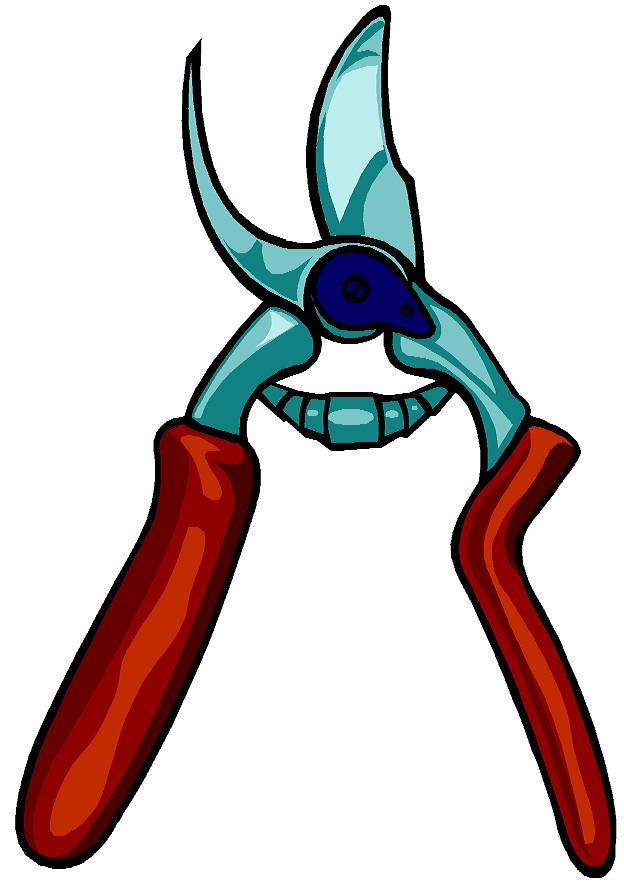 Sanitizing Pruning Tools - March 14, 2012 Jeff Schalau, Agent, Agriculture & Natural Resources University of Arizona Cooperative Extension, Yavapai County As I conduct my deciduous fruit tree pruning demonstrations in cooperator’s orchards, I am always mindful of the potential for disease transmission and have always sanitized my tools with 70% isopropyl alcohol. I simply carry a bucket with a smaller bucket of isopropyl alcohol in it. I leave the loppers and hand pruners with the blades soaking in it while pruning. At a recent demonstration, an attendee asked about using Lysol for this purpose. At one time, I used a 10% bleach solution, but this was very corrosive on my tools. Lysol seemed like a good idea, so I began poking around for more information on the topic. Most Cooperative Extension Fact Sheets, including my own, recommend using isopropyl alcohol or a dilute bleach solution to sanitize pruning tools. They also recommend leaving them to soak for 2-5 minutes between trees – especially when you see evidence of disease or decline in the trees. I searched on-line for science–based information. When readers do this, I hope you place your trust in “.edu” websites rather than “.com” sites. Like previous fact-finding missions, I arrived at an excellent publication by my Washington State University colleague, Dr. Linda Chalker-Scott. Dr. Chalker-Scott conducted a literature review of peer-reviewed science and synthesized her findings, some of which I share here. Below, I have linked her entire factsheet, Sterilized Pruning Tools: Nuisance or Necessity?. In Yavapai County, one pathogen that poses significant risk of spread by pruning tools between apples, pears, and a few other members of the Rosaceae family is fire blight (Erwinia amylovora). This bacterial disease infects flowers in the spring killing new shoots and can form cankers (discolored, sunken or raised areas) on stems of susceptible plants. Several researchers noted that fire blight is not transmitted during the dormant season – only during the growing season. Other diseases (bacterial spot, Cytospora canker, and some viruses) are readily transmitted by pruning tools during the dormant season. Each of these pathogens were more transmissible when favorable environmental conditions were present, but this research makes a strong case for sanitizing pruning tools to minimize spread of pathogens. Disinfectants tested by various researchers were: alcohol (ethanol and isopropyl alcohol), chlorine (bleach and monochloramine), household cleaners (Listerine, Lysol, and Pine-Sol), and trisodium phosphate (10% solution). All were shown to be effective but with varying advantages and disadvantages. One of the studies also examined the corrosiveness of several products and found that Lysol was least corrosive and bleach was most corrosive. Dr. Chalker-Scott’s conclusions from this literature review were: 1) know your pathogen and its life history, and use common sense; 2) disinfect your tools when working in areas where viruses, viroids, vascular fungus, or bacteria; 3) avoid cutting active, oozing cankers; wait until they dry; 4) if you are pruning irreplaceable plants, always disinfect your tools; and 5) choose a disinfectant treatment that has been shown to be effective through published research. Dr. Chalker-Scott went on to say that she would probably not use alcohol but one of the common household cleaners at full strength. This was compelling enough for me to switch from isopropyl alcohol to Lysol for sanitizing my pruning tools. I met Dr. Chalker-Scott when she spoke at the Arizona Highlands Garden Conference in October 2011. She is a highly respected, Extension Specialist with a long history of “myth busting”. I highly recommend her publications and books – she always cites the studies where she obtained information and makes her arguments with support from peer-reviewed science. I also thank the perceptive pruning workshop attendee that brought up the question about Lysol in the first place. This is just another example of the importance of listening to people in the field and valuing two-way communication between University faculty and practitioners. This old dog has learned a new trick! Naming of companies or products is neither meant to imply endorsement by the author nor criticism of similar companies or products not mentioned. Follow the Backyard Gardener on Twitter – use the link on the BYG website. If you have other gardening questions, call the Master Gardener help line in the Camp Verde office at 928-554-8999 Ext. 3 or e-mail us at cottonwoodmg@yahoo.com and be sure to include your name, address and phone number. Find past Backyard Gardener columns or provide feedback at the Backyard Gardener web site: http://cals.arizona.edu/yavapai/anr/hort/byg/. Sterilized Pruning Tools: Nuisance or Necessity? by Dr. Linda Chalker-Scott puyallup.wsu.edu/lcs/wp-content/uploads/sites/403/2015/03/Pruning.pdf |